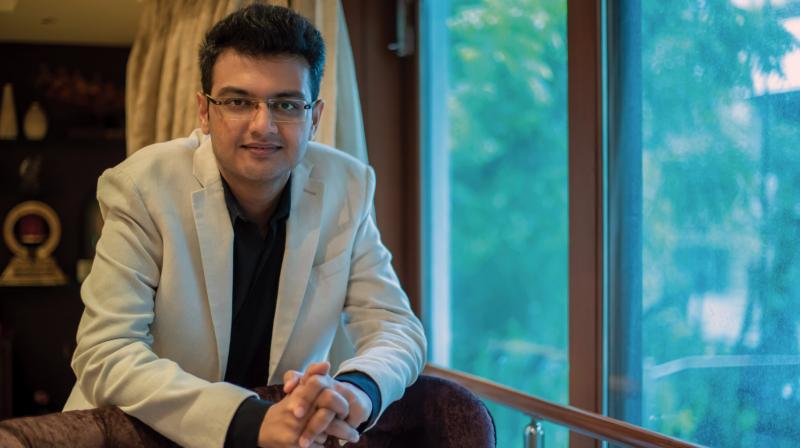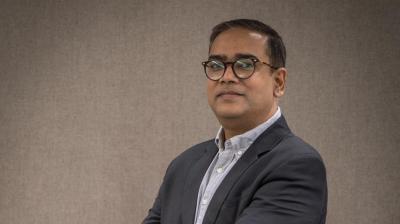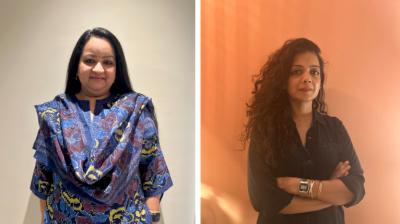Kailash Adhikari, director, Sri Adhikari Brothers Network, caught up with Manifest to speak about comedy as a genre and how traditional media continues to grow in India during this digital explosion.
Edited excerpts:
While Sri Adhikari Brothers has recently entered the digital space, it’s a traditional television company. What is the current state of the industry in your view?
People wrote the obituary of print when television came into the ecosystem. Today, print is a handsome USD 3 billion industry and is still going in decent single-digit numbers.
On television, yes, we have seen some headwinds over the past two or three years. This is mainly coming from the pay-TV ecosystem and in advertising expenditure. Covid was a major factor (for the advertising expenditure dipping). After that, a lot of thinking and strategising for brands as well as agencies has changed slightly.
English television consumption has died in the traditional form. The same content is available on OTT and the takers of this content – urban SEC AA+ are those who have taken the cord-cutting route. In absolute terms, it’s a minuscule number.
When it comes to children’s content, the likes of Cocomelon and Peppa Pig are on YouTube. I have twin children who are 20 months old and they love the (mobile) screen. I know they will be hooked to digital to consume such content.
Moving to mainstream content consumption – GECs, music, news and films – there are takers for these genres on television. Some bit of cord-cutting has affected subscription revenue but it’s not gone down the drain. Some softness in advertising is seen because of FMCG volume growth. Startups are not advertising as much on TV because of funding issues too. Automobile advertising has dipped too because as soon as they launch, they’re booked for the next two years.
Once you see a rural recovery post-elections, TV will bounce back. There is still a very large audience for TV consumption. India is one of the only countries where free TV consumption is growing. DD Free Dish has reached a user base of 4.5 crore (45 million) according to an EY report. The report projected it to reach 6.7 crore (67 million) by the end of next year.
So, there’s some softness in pay TV, but not a big drop.
That’s a pretty big number for free TV users alone. While OTT operators are talking about targeted users as a benefit over TV channels, the latter isn’t using recent reports about ad fraud to their advantage to keep advertisers on TV. What’s your take on this?
The thing with digital is that there’s no one unified measurement system. Television has BARC, which everyone believes is a currency.
BARC has also had its doubters though…
It’s an industry body – 60% is IBDF (Indian Broadcasting and Digital Foundation), 20% is ISA (Indian Society of Advertisers) and 20% is AAAI (Advertising Agencies Association of India). So, we all have given that credibility to BARC and we should maintain it. Any good changes can be made to it? Yes, of course. Everyone can better themselves, and so should an organisation. That doesn’t mean that we dismiss them either.
Coming back to your question - when it comes to digital, were buying on numbers the platform is stating. They are selling their products and it’s their version. There’s no independent version coming out. The entire euphoria of digital advertising which is pegged at around INR 50,000-55,000 crore – 80% is between Google and Meta. It’s not that the entire ecosystem of OTT gets that revenue. That number is minuscule. The AVOD OTT business model has a long time to mature in this country.
Coming to Sri Adhikari Brothers, how has it evolved?
My father and late uncle started it back in the 1980s. In 1995, we were the first media company to go public on the stock exchange. In 2000, we launched SAB TV.
After that, we have seen a sea of change. In 2010, we launched Mastiii, Dabangg (Bhojpuri market) and Maayboli (Marathi market) and they all have been performing well.
Recently, we launched Dhamaal, a Hindi free-to-air general entertainment channel on DD Free Dish. On 3 June, we revamped it with new programming. We’re also expanding it to the pay market soon.
The legacy content we had is now being monetised on the likes of YouTube. We are also creating content specially for YouTube and Meta. It’s not just entertainment content but music as well. We’re creating music IPs as well.
The perception is that Sri Adhikari Brothers has specialised in creating comedy content. That’s been a hard genre to get right and many have tried and failed. Comedy shows in the country have not had a long run. What was Sri Adhikari Brothers’ secret to success?
SAB TV was launched by my father in 2000 at a time when there was a lot of drama clutter. Getting it right was about understanding the pulse of the audience. Shows like Office Office and Yes Boss clicked. As you rightly said, comedy is very difficult to create. Making people laugh is not easy.
Comedy has also evolved. We had our shows on SAB TV, then there was The Great Indian Laughter Challenge, and now we have stand-up comedy gigs. I believe in the long run it’s difficult to produce and what SAB TV could do with us and under the Sony stable is quite fantastic. It’s among the top three GECs in the country and is a formidable brand.
When we launched Mastiii, it was a mix of comedy and music. We had comedy gags between songs. It was an instant hit. But then we thought, you can’t restrict yourself to comedy. Maayboli and Mastiii are pure music channels now.
Was this decision taken because of comedy moving to stand-up and comedians using social media to reach out to the audience directly?
No, it’s not that. As a media company, you should be present across genres. Yes, you should have a USP, and be known for something, but you shouldn’t just do that one genre.
ITC was a tobacco company. Now it’s spread across categories. For us too, as a production company, we have a crime library larger than comedy, which has aired on Doordarshan. We are monetising this on YouTube and Meta now.
The thought going ahead is to create more IPs, which could be for the linear and digital front. Linear is our bread and butter. We have created one more offering through Dhamaal.
What’s your linear-to-digital ratio?
Digital is in its infancy right now. It was just born last year. In five years, I think it’ll be 50:50, but right now it’s too new.
How are you marketing your channels? What’s the media mix?
We are targeting tiers two and three right now. So, we are using conventional means like wall paintings, moving buses and cross-promoting on our channels. It’s about having the best mix to reach our audience.
To promote a linear medium, it makes sense for me to only promote it on a linear platform. Promoting it digitally won’t help me get that traction. We’re looking at both on-ground and off-ground.
What are the challenges the linear media space has?
Retention of audiences. The market is competitive. But if you get your programming right, the audiences will be there and you can sustain.
What’s your take on the mergers happening in the broadcast space?
Consolidation keeps on happening and it’s good sometimes. I don’t see a demerit in this.
This article first appeared in the June print issue of Manifest. Subscribe to Manifest here

.gif)










